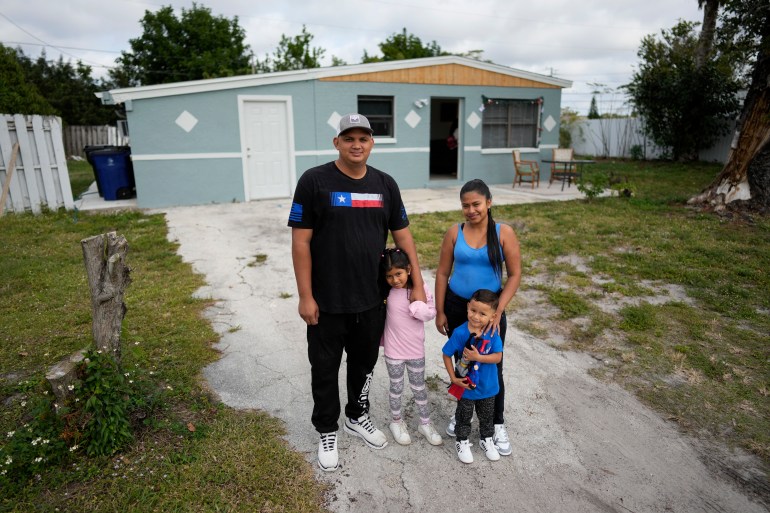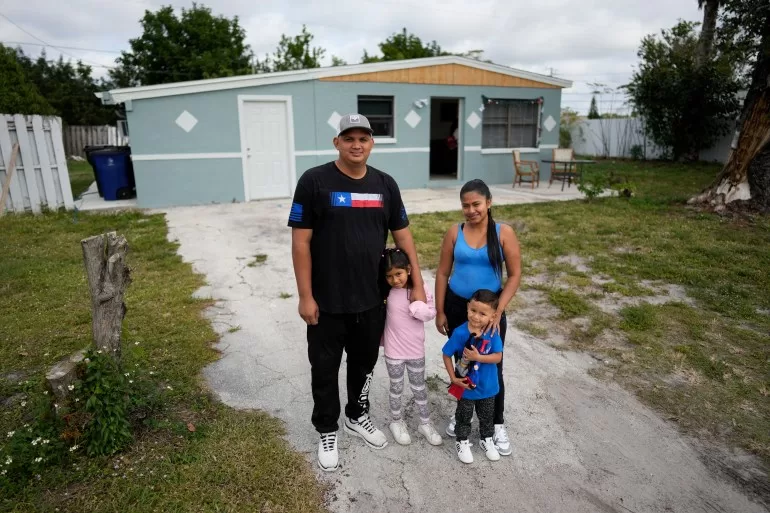A new report indicates that a year-old initiative to address irregular migration to the United States has been a relative success — but restrictions have limited the programme’s potential benefits.
On Thursday, the Mixed Migration Centre, a research and policy organisation, released an analysis of the Safe Mobility Offices (SMOs), an effort by the US government to discourage migration through the country’s southern border.
Launched by the US State Department in 2023, the Safe Mobility Initiative established offices in Latin American countries where certain qualifying migrants could file applications to resettle in the US through legal pathways, including by pursuing refugee status.
The lack of legal pathways, the report explained, continues “to drive people towards irregular, onward and often dangerous migration journeys, causing enormous harm and huge profits for smugglers”.
But the report praised the Safe Mobility Offices as a step forward. “Despite their flaws, the Offices offer a new path to protection in an environment where such things are rare,” the report’s authors wrote.
Addressing pressure on the US border
The Safe Mobility Initiative was unveiled at a time of pressure for the administration of US President Joe Biden.
Republicans and Democrats alike had slammed his administration for record levels of irregular crossings at the US-Mexico border. In the 2023 fiscal year, the US Border Patrol documented 2,475,669 “encounters” across the southwestern border — an all-time high.
The offices were designed as “processing centres” — located away from the border — where eligible migrants and refugee applicants could get support for their immigration cases and other services, without having to make the treacherous journey to the border.
Branches have since been opened in Colombia, Costa Rica, Ecuador and Guatemala. US officials said they hope to eventually open some 100 “brick-and-mortar” centres across the Western Hemisphere.
An estimated 242,600 people have applied to receive services through the programme since its launch, according to US officials, with about 9,000 people resettled as of May and another 11,000 approved for resettlement.
That’s a fraction of the 2.6 million migrants and asylum seekers expected to arrive at the US’s southern border by the end of this year.
But the initiative has promise, according to the Mixed Migration Centre. Its report praised the Safe Mobility Offices for expanding access to resettlement options.
Still, the report noted the tense political environment in the US could limit the efficacy of the Safe Mobility programme: Immigration has emerged as a central issue in this year’s presidential race.
“The volatile political situation in the US has raised concern about the sustainability of the offices,” the report’s authors wrote.
They also stressed that current eligibility requirements exclude some of the most vulnerable migrants, including those in transit, those without legal status and those who started their journeys more recently.
“The SMO initiative itself is great but we need to address the shortcomings,” said Bram Frouws, director of the Mixed Migration Centre. “For example, Haitians passing through Colombia on their way to the notoriously dangerous Darien Gap for the most part aren’t even eligible to try to apply, even though they are one of the eligible nationalities.”

Restrictions to applying
Under the current rules, citizens of only nine countries are eligible to apply, and except for Guatemalans, none can apply from their home countries. A requirement that applicants must have been present in the partner country prior to the opening of the offices also excludes many potential beneficiaries.
The report also noted that the Safe Mobility Offices do not “provide direct support” — only information — to those seeking to reach the US through humanitarian parole programmes, work visas and family reunification schemes.
Rather, the report said there was an “emphasis on refugee resettlement” at the centres, something it cited as a “structural” deficiency.
“To make a real difference, SMOs must provide more access to other existing migration pathways to those who do not qualify for resettlement,” Frouws said.
In practice, the report concludes, the initiative has only been effective at reaching Venezuelans in Colombia and Guatemalans in Guatemala.
A spokesperson for the State Department told Al Jazeera that thanks to the programme, thousands of applicants have been able to remain and rebuild their lives in local host communities, or have completed the vetting process to safely resettle in the US or other countries.
“In addition to promoting lawful pathways, the initiative facilitates greater integration and regularization of migrants to allow them to remain where they are,” the spokesperson said, adding that the initiative is “still in a period of growth and development and aims to expand options provided to migrants, including lawful labor pathways to other countries in the Americas and Europe.”
The Mixed Migration Centre report stresses the model is a valid one and should be replicated elsewhere, including in Europe.
“The SMOs in Latin America demonstrate that it is possible with political commitment and investments to progress on finding ways to increase safe pathways,” said Charlotte Slente, the secretary-general of the Danish Refugee Council.
“This makes a real difference for those women and men, who are successfully approved for resettlement and helps them resume their lives faster and in safety.”
